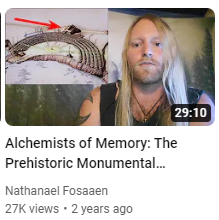Friday, April 28, 2023
Tuesday, April 25, 2023
Rock Features of the Upper Klamath Basin (2018 Thesis)
By Roman Jakien
Central Washington University, romansjakien@gmail.com
“Obtaining power through features on the landscape and stacking rocks were prominent aspects of their traditional religious practice (Deur 2016; Haynal 2000; Ray 1963; Spier 1930; Theodoratus et al. 1990). Deur (2016:36) notes that in Klamath and Modoc oral tradition, the act of stacking rocks during the vision quest is “attributed to the very beginnings of human time, and is rooted in the instruction of the Creator, Gmukamps.” Ray (1963:xiii) noted that the two tribes not only created “artificial rock piles for religious and commemorative purposes” but also “attributed mythological significance” to naturally occurring rock piles…It has been written that certain rock feature types, like “rock stacks” and “prayer seats” are sometimes positioned at specific geographic locations that align them with distant landscape features such as mountains, lakes, and rivers (Jankowski 2012). Deur (2016:52) suggests that ritual rock features are sometimes aligned with distant landmarks so that prayers can be focused towards those places, or powers obtained from those landmarks. He also suggests that some landmarks have stories or moral lessons associated with them that can be incorporated into ritual activity or prayer. The importance of visualizing a distant landmark for certain ceremonial purposes explains why many vision quest sites are found at higher elevations with open viewsheds (Applen 2001; Jones 2003)…
Deur
(2016:56-57) states that the “practice of ritual rock stacking is said to have
skipped a generation in many families” due to the assimilation policies and
tribal termination, but that there has been a “reawakening in recent decades.”
Information gleaned through recent ethnographic studies indicate the practice
of constructing rock features in traditional Klamath and Modoc lands continues
by current Klamath tribal members, even with the conversion of many to
Christianity or secular belief systems (Deur 2016; Haynal 1994, 2000)…”
Jakien, Roman, "Rock Features of the Upper Klamath Basin: An Integrated Approach to Identification" (2018). All Master's Theses. 892.
https://digitalcommons.cwu.edu/etd/892
https://digitalcommons.cwu.edu/cgi/viewcontent.cgi?article=1873&context=etd
A few artifacts from Plymouth, MA
Some eclectic finds, from a town with a sense of the past. A special place for Americans. What I never realized about Plymouth before is that it was as very hospitable place, with a welcoming topography.
The most recent prehistory of the town is oriented towards the Wampanoag. These items suggest a deeper past.
A closeup:Saturday, April 22, 2023
Large Rock Pile with Enclosure, from PA
[From Norman Muller]
Going through some old photos, I came upon this image of a large cairn supposedly somewhere in Berks or Bucks Co., PA. What I found interesting was the stone enclosure at one end. That reminded me of an enclosure I had photographed in Westkill, NY ages ago (0097). And then I remembered another small enclosure at one end of a large cairn, also in Westkill. The enclosures look like sacred spaces, perhaps to leave offerings.
Saturday, April 15, 2023
Prehistoric Monumental Archaeology of the Southeastern United States
Archaeologists have been studying the monumental earthworks in the eastern woodlands since Thomas Jefferson first tasked a few of his slaves with excavating one in order to determine if they were built by Native Americans or not. Here I very briefly review what we know about the process of monumentality in the Southeast over the course of 6000 years .
Thursday, April 13, 2023
Lithic Analysis of Nevada Stone tools
A series discussing some of the details of the stone tools I brought back from Nevada [not rock pile-related. ]
Monday, April 10, 2023
Nashobah Praying Indian Book Signing & Open House
Sunday April 23, 1:00 pm – 3:00 pm, Littleton Historical Society, 4 Rogers Street, Littleton, MA
History of the Nashobah Praying Indians: Doings, Sufferings, Tragedy, and Triumph
Please join Strong Bear Medicine and Quiet Storm of the Nashobah Praying Indians at the Littleton Historical Society building on Sunday April 23 for an open house celebration of the newly released book: History of the Nashobah Praying Indians. Meet and mingle with Strong Bear and Quiet Storm, and author, Littleton historian Daniel V. Boudillion. Have your books signed, partake of refreshments, and enjoy Native music.















